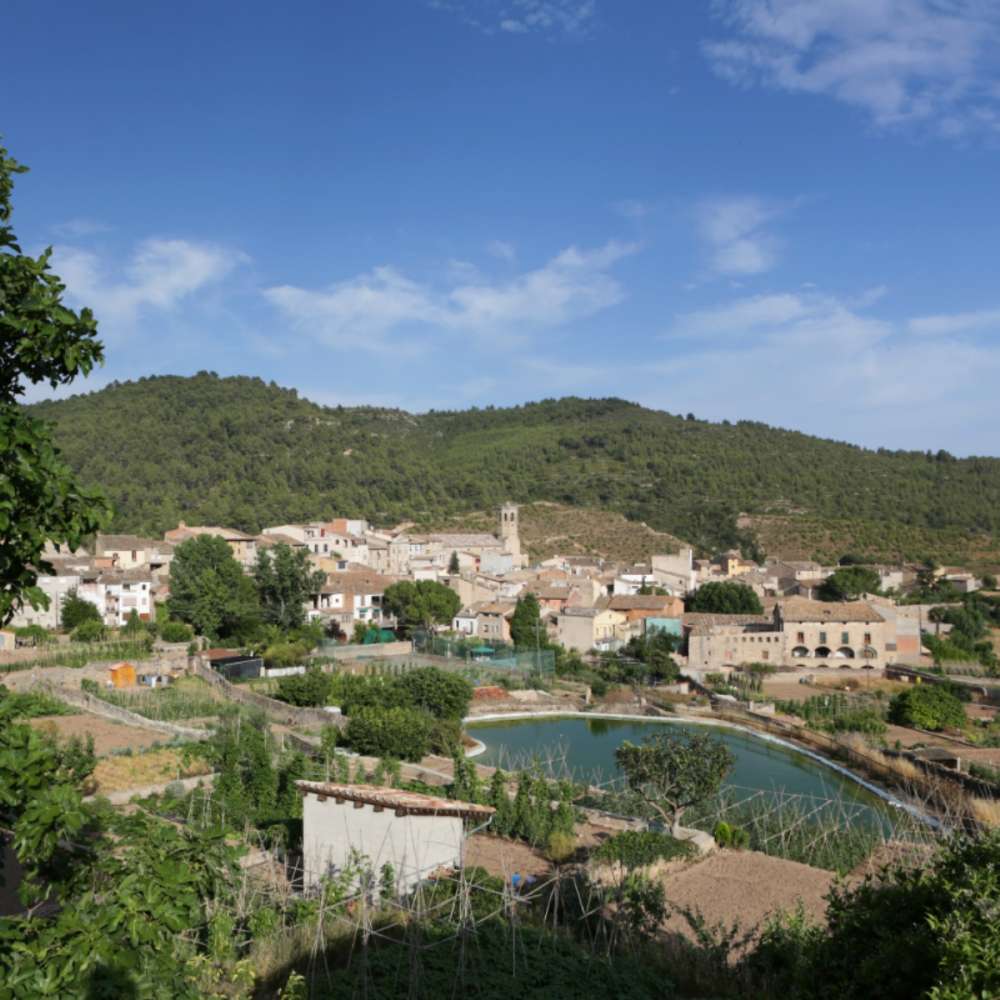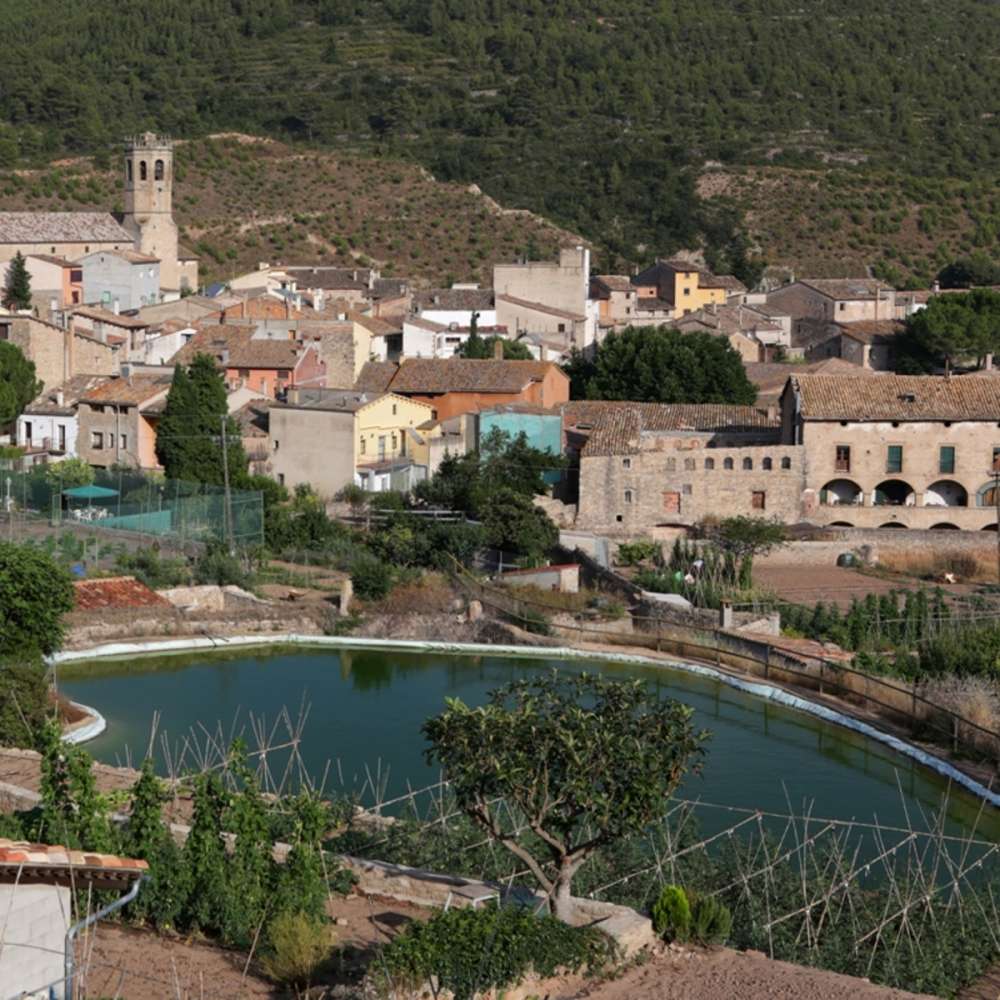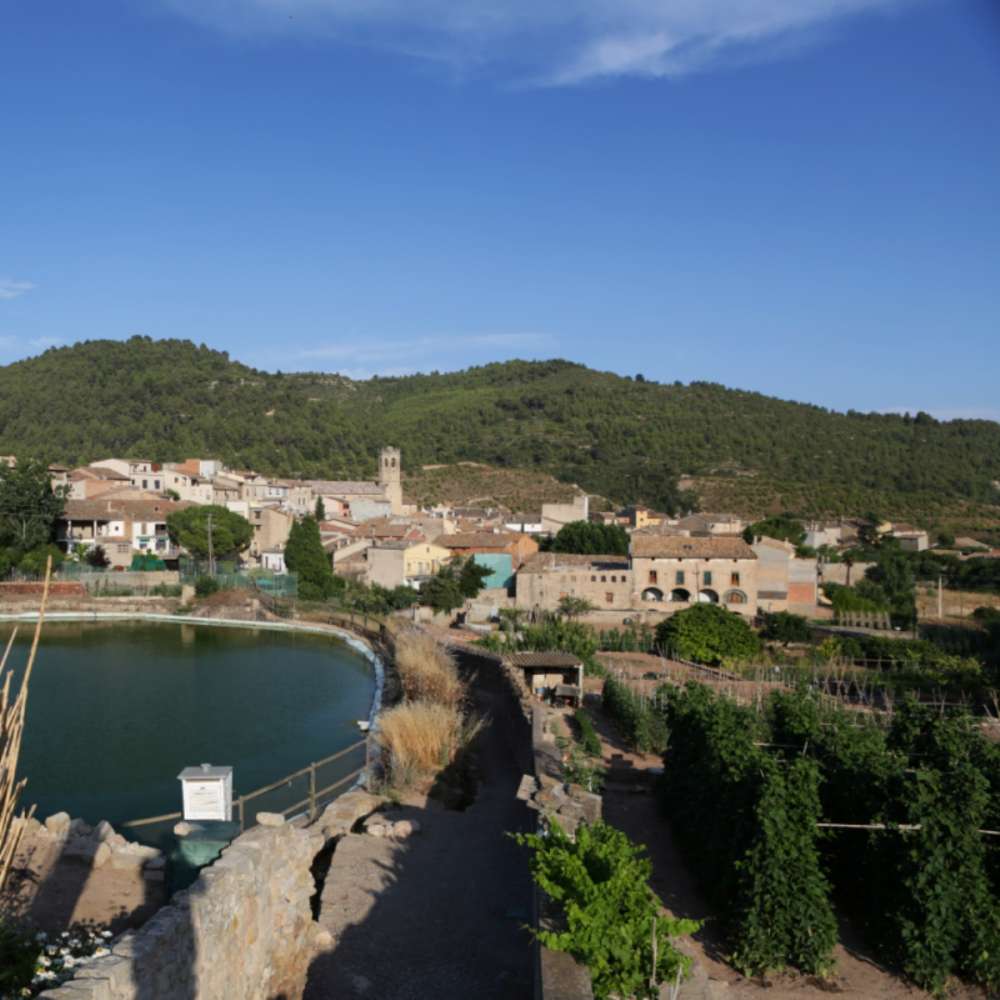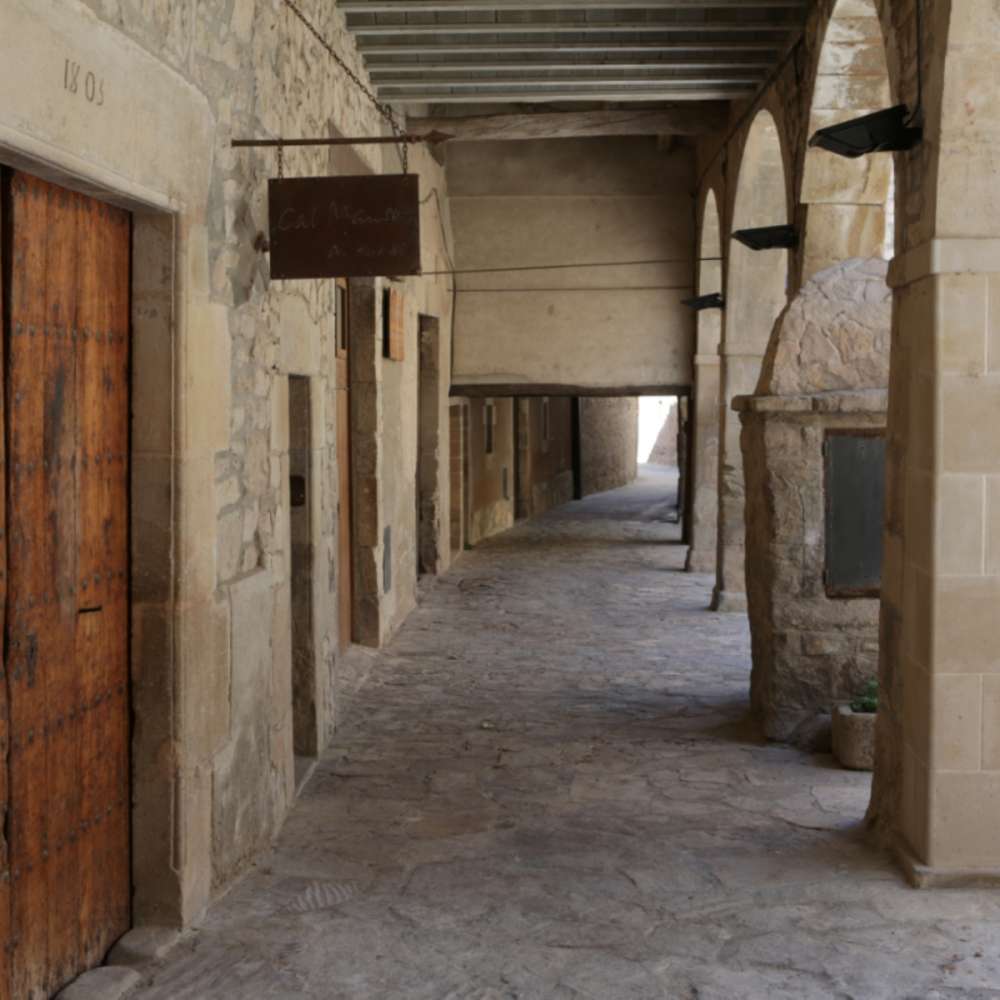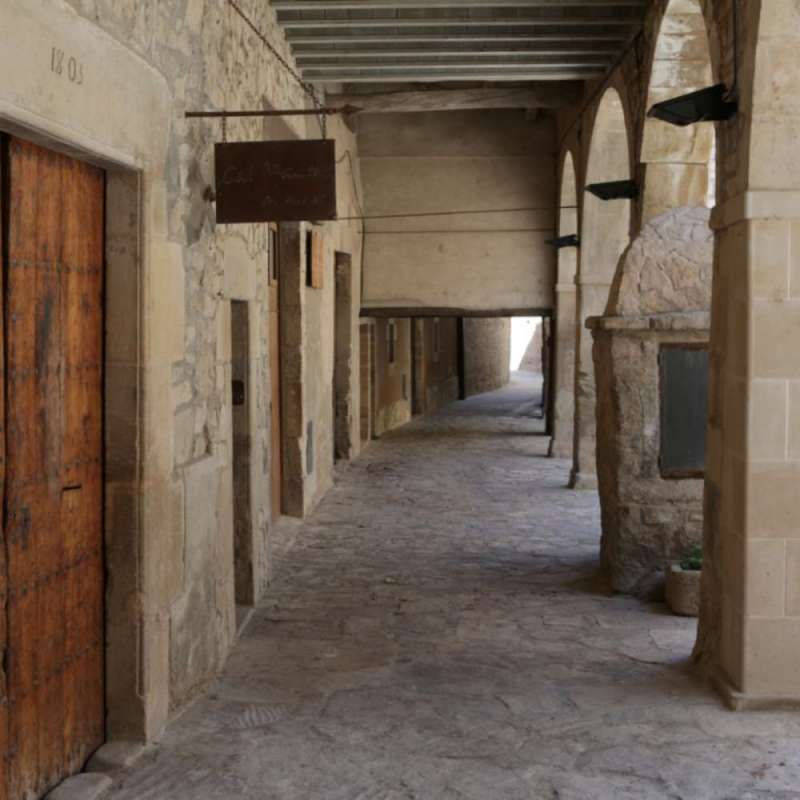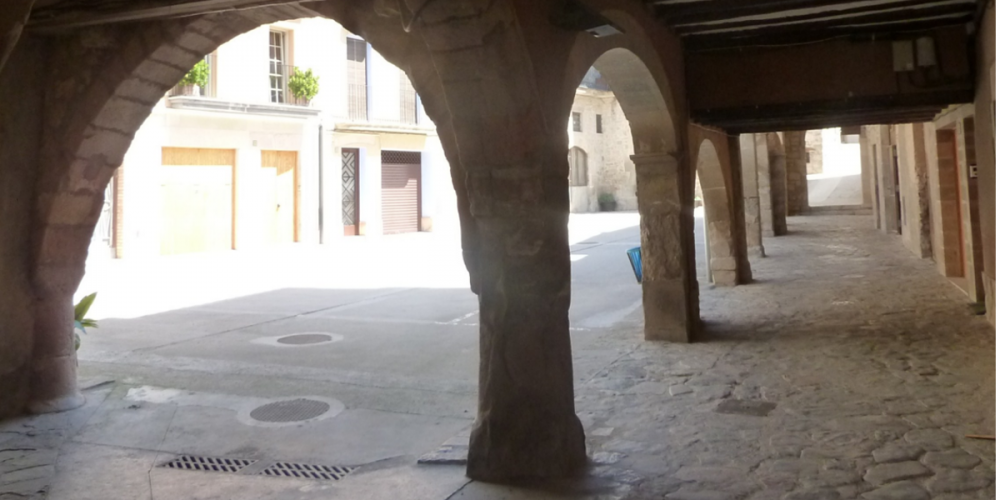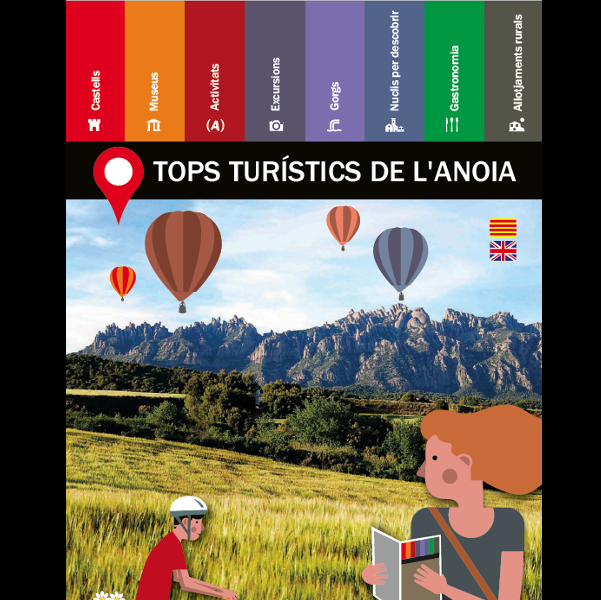Copons, stopping-off point for muleteers and traders
The municipality of Copons (432 metres above sea level) was built in the valley formed by the confluence of the Anoia River and the Sant Pere Stream, on the side of the hill once crowned by the long-gone castle. Carrer Castell (Castle Street) and Carrer del Mur (Wall Street) were originally located inside the perimeter of the mediaeval walls. Outside the walled area, Carrer Vilanova and Carrer del Raval led to the lower part of the town, forming Carrer Major.
The 18th century was a very prosperous period for Copons thanks to its muleteers, the most important of whom were the Jover, Segura, Brunet and Ramon families. These muleteers traded with the textile sector and sold goods in major cities both in Catalonia (Igualada and Barcelona) and other parts of Spain (Castile, A Coruña). On their return trips they would bring flour to supply the 18 mills located along the Anoia River (from the Roda Mill to the Cal Madora Mill). Copons became an important stopping-off point along the Camí Ral (mediaeval road) between Calaf and Igualada.
The town’s grand houses and distinctive urban layout are a legacy of this period. A series of grand houses stretch along Carrer del Mur and Carrer del Castell, for example, boasting voussoirs emblazoned with coats of arms, such as Casa Lacambra, Cal Segura or Cal Poldo, where the first mechanical loom in Catalonia was installed. Another noteworthy landmark is the bell tower of the Parish Church of Santa Maria (1754), in a neoclassical style with baroque touches. The church contains some valuable reredoses.
Places of interest in the municipality:
1) The Water Mills Route, especially the Mig Mill and the Cal Madora Mill, along with the ponds and underground reservoirs used to supply these mills.
2) The Nafre Pool.
3) The arcaded square and the streets of the old quarter.
4) The legend of Roc of Copons.
5) Collection of traditional carpentry tools.
6) “Diàspora” monument to the muleteers and traders of Copons, by the artist Ernest Altés.
www.copons.cat
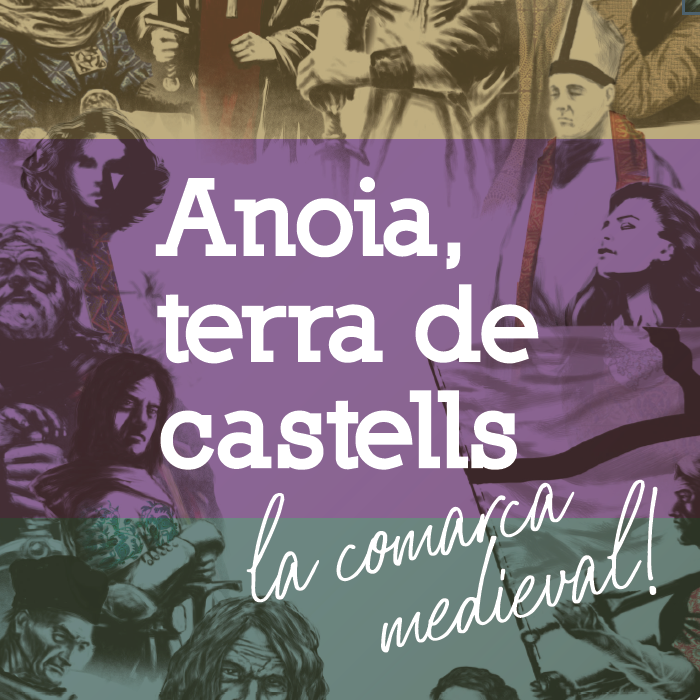
I RODALIES

